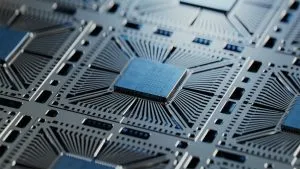
The EDA AI system applies across all semiconductor and PCB design suites, including Questra, Tessent, Xpedition, Veloce, Catapult, Calibre, Aprisa and Solido. “It is important that [the system] is open and customisable and supports multiple LLMs (large language models), said Amit Gupta, VP and GM of Siemens’ Custom IC Verification division. Customers can add data and build custom workflows, but Gupta stressed that only the data user has access to, and can control, the data.
At DAC, the company highlighted the capabilities that EDA AI brings to three of its tool suites. For the Aprisa tool suite, integrated Aprisa AI technology enables AI features and methodologies across RTL-to-GDS. It has a natural language interface while AI design exploration adaptively optimises PPA (power, performance, area) for a design while generative AI-assist provides ready-to-run examples and solutions. Siemens says that the production-ready, customisable and transportable AI-generated solutions increase productivity by a factor of 10 and increase time to tapeout x3 and improve PPA for digital design by 10% across all process technologies.
For the Calibre suite, Calibre Vision AI loads and organises critical design violations into intelligent clusters, halving the time it takes for design teams to identify and fix them for signoff. “It means that designers do not have to wait for all the elements to be clean before verification,” explained Carey Robertson, senior director, circuit verification product management for Calibre. “It is possible to put together the design without IP or with ‘dirty’ IP . . . the intelligent debug capability means designers can prioritise errors for efficiency.”
To improve workflow, ‘bookmarks’ can be used to capture current analysis state, including notes and assignments. These can be shared between chip integrators and block owners during physical verification. Calibre Vision AI is integrated into existing layout viewers and physical design tools to enable engineers to debug in their current implantation environment.
The third suite is Solido, which uses the EDA AI system to deliver generative and agentic AI capabilities throughout the Solido Custom IC platform’s phases of custom IC development, i.e., schematic capture, simulation, variation-aware design and verification, library characterisation, layout and IP validation.
Siemens’ EDA AI system is currently available for early access across the Siemens EDA portfolio.
Related: https://www.electronicsweekly.com/news/products/two-software-tools-target-efficient-design-of-2-5d-and-3d-ics-2025-06/
